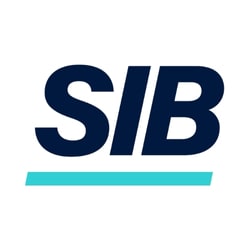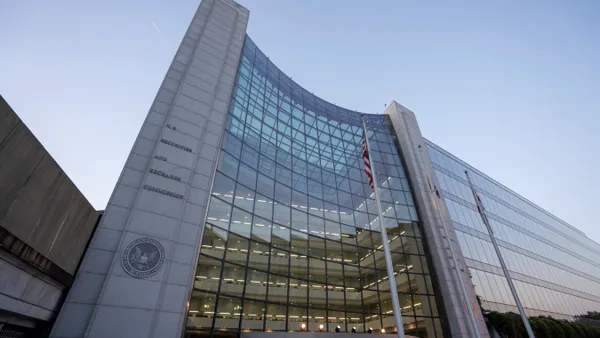Dive Brief:
- A panel of top U.S financial regulators warned Friday that companies that fail to smoothly switch from the London Interbank Offered Rate (LIBOR) to a new reference rate on Dec. 31 could face serious legal liability and other risks.
- “Market participants that do not execute plans for this transition could face significant legal, operational and economic risks,” according to the Financial Stability Oversight Council (FSOC), which includes leaders at several federal agencies, including the Securities and Exchange Commission and Federal Reserve.
- “The transition away from LIBOR is entering a critical stage,” FSOC said in an annual report on financial risks. “Market participants should act with urgency to address their existing LIBOR exposures and transition to robust and sustainable alternative rates.”
Dive Insight:
U.S. regulators for many years have urged financial institutions and other companies to stop using LIBOR, the reference rate for trillions of dollars in mortgages, derivatives, business loans and other financial contracts worldwide.
LIBOR is derived from London banks' estimates of what they would be charged when borrowing from other banks and was the subject of a manipulation scandal in 2012. The final fixings for most LIBOR rates — including one-week and two-month U.S. dollar LIBOR — will be made on Dec. 31, but other U.S. dollar tenors may continue until June 30, 2023.
As an alternative to LIBOR, regulators have endorsed the Secured Overnight Financing Rate (SOFR), which is based on overnight repurchase agreements secured by U.S. Treasurys.
“More work remains to be done” on the LIBOR transition, Treasury Secretary Janet Yellen said during a webcast of an FSOC meeting on Friday.
“With only two weeks remaining before two crucial year-end LIBOR deadlines, it’s important that market participants continue to prepare for the cessation of several LIBOR currency tenor pairs, as well as ensure that they're ready to meet supervisory expectations regarding new LIBOR exposures,” Yellen said.
FSOC in its annual report flagged three risks during the LIBOR phase-out:
First, to curb volatility, companies should favor using SOFR, which “is based on a deep market whereas some other alternative rates are based on a smaller number of transactions,” FSOC said. An alternative rate based on a small transaction volume “could introduce risks if the rate is susceptible to volatility and disruption during times of market stress.”
Companies should avoid writing financial contracts linked to LIBOR, reducing their exposure to a reference rate that will soon sunset, FSOC said. The regulators also noted the vulnerability of companies that hold financial contracts lacking fallback language that sets out an adjustment when LIBOR ceases to exist.
“Market participants should understand the exposure of their firms to LIBOR in every business and function, assess the impact of LIBOR’s cessation or degradation on existing contracts and take available steps to remediate risks from existing contracts that do not have robust fallback provisions to transition the contract to an appropriate alternative rate,” FSOC said.
Looking ahead to 2022, the Alternative Reference Rates Committee (ARRC) — a panel including financial institutions and the Fed — said Thursday it had “identified a few key issues where further work will be required” to ensure a smooth end to LIBOR.
First, regarding LIBOR-based futures, “progress may be needed to accelerate the transition next year given the large role that non-banks play in these markets,” ARRC said. It noted the need to “avoid a situation where futures liquidity becomes ‘stranded’ on LIBOR while the rest of economic activity has transitioned to SOFR.”
“Market participants should be aware of and plan for the potential risk that liquidity in LIBOR markets could decline after the year-end supervisory deadline,” the ARRC said, reiterating its call for an end to the writing of new LIBOR-linked financial contracts after this month.
Second, many LIBOR loans will not mature before Dec. 31 and “many borrowers and lenders may not adopt their first SOFR loan until 2022,” ARRC said, flagging the need for advances in “market conventions for SOFR loans.”
Some borrowers want more information about the pricing of SOFR-linked loans, “and it appears that smaller borrowers may be being offered fewer borrowing options than larger borrowers,” the committee said.
Third, securitizations would also benefit from progress in “market conventions,” ARRC said, noting how Fannie Mae and Freddie Mac have taken the lead in bundling SOFR-linked mortgages into securities. “As more loans move to SOFR, it is likely that securitization markets should likewise transition in the coming months.”














